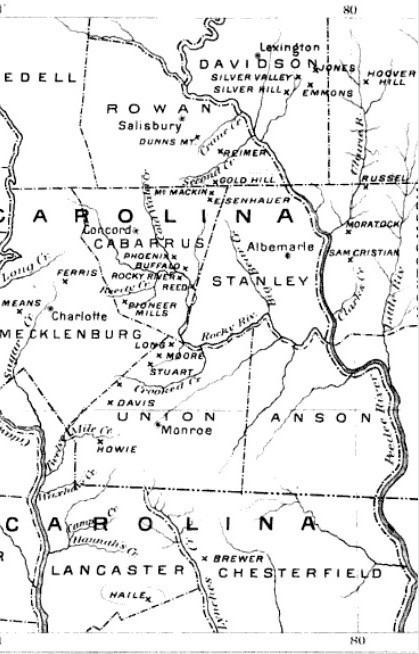 | ||
The Carolina Gold Rush, the first gold rush in the United States, followed discovery of gold in North Carolina in 1799. It was not until a few years later that word of the gold spread and men started coming to North Carolina from other states.
The US Mint reported gold production from North Carolina in 1793, but gave no further details. In 1799, young Conrad Reed, found a 17-pound shiny rock while playing at a creek on his family's farm in Cabarrus County, North Carolina. He and his family kept it as a doorstop until 1802. His father, John Reed, took the rock to a jeweler who recognized it as gold and bought it from the unaware Reed for $3.50 (a week's pay for farm labor). A year later, Peter, one of the slaves held by the Reed family, found a 28-pound nugget of gold on the property. John Reed started placer mining, and later underground mining on his property and became a wealthy man.
The Reed Gold Mine, was designated a National Historic Landmark. Visitors can explore reconstructed underground mining tunnels.
Over 2,500 ounces of gold was deposited in the Philadelphia Mint by 1824.
The Charlotte Mint
In 1835, Andrew Jackson signed into a law bill to open three branch mints: in Charlotte, North Carolina, and Dahlonega, Georgia, for minting gold coinage, and in New Orleans, Louisiana. The ones in Charlotte and Dahlonega were to mint the newly discovered gold.
